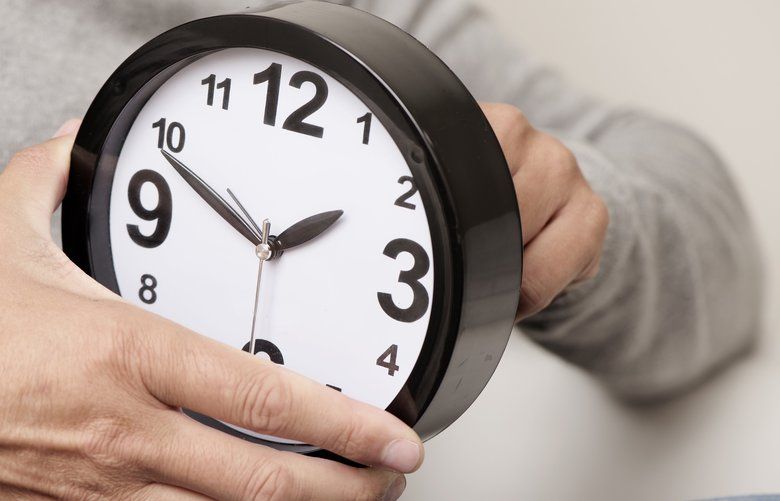Gov. Jay Inslee signed a bill to put Washington state permanently on daylight time Wednesday afternoon, clearing one more hurdle in efforts to eliminate the twice-yearly clock shift.
The bill passed with overwhelming bipartisan support in both the state House and the Senate this legislative session and is among efforts throughout the country, and particularly on the West Coast, to “ditch the switch.”
“It’s part of a movement to get rid of this absurd clock-switching thing that doesn’t make sense anymore,” said Rep. Marcus Riccelli, D-Spokane, one of the bill’s sponsors.
Before the state can adopt permanent daylight time, however, Congress would have to approve. Under federal law, states may decide either to be on permanent standard time — which is what we observe from November through March — or to switch back and forth between standard time and daylight time.
Supporters argued that eliminating the time seesaw has a host of benefits, including health, public-safety and energy-saving gains.
In years past, the state has considered proposals to eliminate the shift, but those efforts were focused on adoption of standard time, which proved wildly unpopular, according to several legislators. Permanent standard time would have meant that the sun would rise during the summer as early as 4 a.m.
By contrast, according to Riccelli, Washington legislators have been overwhelmed by the response from constituents who want that extra hour of light in the evening.
California voters approved a similar measure last year and currently a bill is pending in the legislature that would require the observation of year-round daylight saving time if authorized by Congress.
In Oregon, a bill that would require all of the state in the Pacific Time Zone, which excludes just a portion of Malheur County near the Idaho border, to observe year-round daylight saving time if both Washington and California do the same. That bill has passed the Senate and is now pending in the House.
There has also been talk in Idaho of eliminating the time change, and British Columbia Premier John Horgan has said that he will authorize the move to permanent daylight saving time if Washington, Oregon and California do so.
“I think we can act in unison, the four jurisdictions, and make the argument we can stay in Daylight Saving Time or Pacific Standard Time and then do it together,” Horgan told the Global News.
Proponents say the West Coast presenting a united front on this issue will be key to getting blessing from Congress.
One common critique of the plan is that switching to daylight time in the winter would leave children standing at their bus stops in the dark in the mornings. Sen. Sam Hunt, D-Olympia, told The Seattle Times in February that although that is a compelling concern, most Washington schoolchildren are already doing that, and schools can change their schedules if they wish.
David Avery, a professor emeritus in the University of Washington School of Medicine’s Department of Psychiatry and an expert in seasonal affective disorder (SAD), opposes the move and says it would be devastating from a wellness perspective, especially for those with seasonal depression.
“I think people are so focused on the idea of having more light in the evening that they don’t think about how this is, in effect, morning light reduction time,” said Avery, who explained that our bodies’ circadian rhythms are synced by exposure to morning light.
A similar move in Russia was determined to be a failure after three years, he said, when studies showed a decrease in academic performance among high-school students and higher rates of winter depression, mortality and cancer.
“I just think this is a massive experiment and that there are going to be some unexpected consequences from this,” he said.
Avery also said he hopes there is a more vigorous conversation at the national level about the potential negative effects of the revision.
Riccelli said the negative effects can be countered and are outweighed by the benefits.
It’s not just West Coast states trying to get off the time teeter-totter. Florida passed the Sunshine Protection Act last year, and its congressional delegation has been pushing for the issue to be taken up nationwide.
As it stands, Arizona and Hawaii are the only states that don’t observe daylight saving time. The territories of American Samoa, Guam, the Northern Mariana Islands, Puerto Rico and the U.S. Virgin Islands don’t, either.
Earlier this year, the European Parliament voted to discontinue the clock switch, requiring each EU member state to choose by 2020 whether to stay on daylight (summer) time or standard (winter) time year-round. The change would take effect in 2021.

The opinions expressed in reader comments are those of the author only and do not reflect the opinions of The Seattle Times.